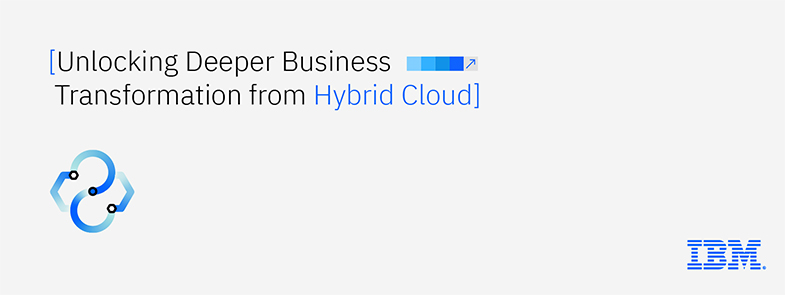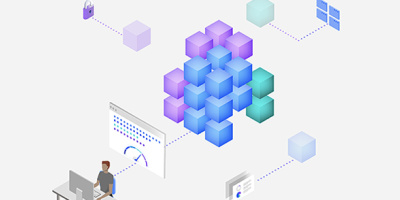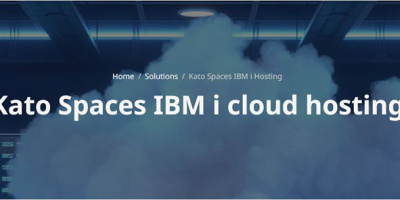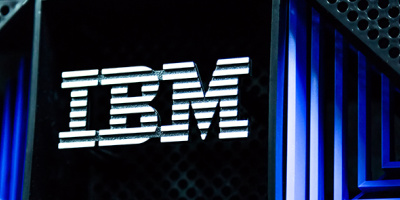Hybrid cloud is the new reality for enterprises. The question for businesses now is – how do you move from mere adoption of hybrid cloud to truly unlocking transformational business value? This was at the center of a “fireside” chat discussion between IBM Senior Vice President of Consulting John Granger and Ted Schadler, Vice President and Principal Analyst at Forrester Research.
The pair, along with Aparna Sharma, Managing Partner, Hybrid Cloud Transformation, IBM Consulting, tackled this question and offered practical advice along with key steps for businesses looking to move from mere adoption of cloud to unlocking significant business value from hybrid cloud.
“Nearly 97 percent of organizations are operating on more than one cloud,” Sharma noted in opening remarks. “We know the pandemic accelerated this move to hybrid cloud, which created digitization opportunities for many businesses. But it unfortunately meant their cloud estate was an ad-hoc mix of clouds on top of clouds and on-prem assets.”
Following that rush to get additional workloads into the cloud, it created a “frankencloud” approach with multiple cloud platforms, which led to complexity and a lack of interoperability.
“The problem is not just the myriad cloud assets themselves, but also the absence of a coherent structure,” said Granger. “It's like you're building a car, and you have a set of random parts spread all over your garage floor. You're a long way from driving a car out of your garage.”
For enterprises to overcome this challenge, Granger suggested three key actions. The first is to move from a multitude of clouds to a single hybrid cloud platform, which provides streamlined service provisioning through a marketplace of cloud services. The second is to design the architecture from a client-centric point of view to make sure the platform is helpful and intuitive, and that people are going to use it. The third is making sure that the architecture works in lockstep coordination with the business transformation agenda.
“If those three things are done, then enterprises can move on from mere cloud adoption and be well on the way towards mastering this hybrid cloud reality,” Granger added.
The “frankencloud” approach can also create complexities when it comes to people and skills.
“From a talent perspective, you need to scale up in a different way,” said Schadler. “Before, you had siloed expertise and siloed operating models. But now, to create coherence, you need a system that allows you to span multiple clouds and benefit from interoperability between them, including core skills to help run that cloud architecture.”
These skills are not brand new, but the demand is reflected in the massive number of job openings today for cloud skills of one kind or another. One opportunity to make the most of their talent is in the way in which enterprises organize their hybrid talent.
“One of the models we see and recommend quite frequently is a center of excellence, which is a multi-domain of experts, people with expertise in the various clouds that you're deployed in, as well as a skillset set of domains, whether that's AppDev or Security or Cloud Operations,” Schadler added.
A center of excellence allows a CIO, as a technology executive, to bring all the moving parts together into a coherent whole, which creates a uniformity that makes it easier for the business to engage, easier to hire and skill for, and easier to partner to fulfill-all working toward a more tightly integrated hybrid cloud structure.
The financial implications of building clouds on clouds have not been ideal for enterprises.
“Companies are managing clouds costs on an individual basis; however they really need to look at those costs through a single view,” said Granger.
IBM research shows that 81% of executives say they are struggling with the cost of cloud and it’s easy to see why. In the early phases of transition to cloud, there was a huge expectation of savings but in many cases, the costs are actually going up where businesses have additional, unforeseen costs.
Mastering hybrid cloud is truly managing all cloud costs through a single view, capturing opportunities to optimize costs and reallocate resources.
“We also recommend companies build out a FinOps capability—financial and sourcing practices to help manage costs,” Granger said. “It’s crucially important to have an end-to-end view of how services are consumed across the enterprise to enable companies to make those decisions and to be able to see what those costs are in order to get on top of it.”
With a new cyberattack in the news nearly every day, it’s little surprise security is top of mind for organizations these day. As companies expand their cloud estates, the number of places where there is a potential security risk drastically increases.
“The number of security challenges is very, very high,” said Schadler. “Whether you're in a regulated industry or not, you've got trust, which is very important to maintain; you've got customers with expectations, which are very important to maintain; and we've got attacks and threats coming in at all times.”
Therefore, it’s extremely important to build a bulwark against the threats. Businesses can't do it piecemeal—there has to be a unified approach.
“Mastery would involve having a unified view of where you are in the process and how to mitigate that risk. There are skills involved, there's tooling involved, applying AI, for example, to monitor and watch where things are going south to have an architecture for security in place,” Schadler added.
It’s crucial to create the security models between clouds to ensure safe connections and secure use of both data access permission and protection across the hybrid cloud estate. That way, the company can separate the foundations and the infrastructure from the actual building of new business value on top of it.
Another potential challenge to a company’s hybrid cloud journey is the diverse cast of ecosystem players, which can seem overwhelming. However, IBM research shows 88% of executives believe that ecosystem collaboration is critical to successful multicloud management.
“The default option is that you simply administer the contracts and the relationships that you have with those partners,” Granger said. “But in order to master hybrid cloud, you really need to bring all of those partners together in a voluntary multilateral ecosystem.
“The key recommendation that we have is to create what we call a captain's table, which brings each of those ecosystem partners very explicitly around the table in order to help a customer move forward,” Granger added. “That is going to create value for the ecosystem partners because they have clarity about what you as a client want and where the opportunities are, but also enables you to be very clear about how you're promoting collaboration across those ecosystem partners for the benefit of what you're trying to achieve.
“It's truly a team effort,” Sharma added. “It takes a whole village to go through this transformation, but it’s incredibly important in order to align for success through this orchestration and collaboration.”






















 More than ever, there is a demand for IT to deliver innovation. Your IBM i has been an essential part of your business operations for years. However, your organization may struggle to maintain the current system and implement new projects. The thousands of customers we've worked with and surveyed state that expectations regarding the digital footprint and vision of the company are not aligned with the current IT environment.
More than ever, there is a demand for IT to deliver innovation. Your IBM i has been an essential part of your business operations for years. However, your organization may struggle to maintain the current system and implement new projects. The thousands of customers we've worked with and surveyed state that expectations regarding the digital footprint and vision of the company are not aligned with the current IT environment. TRY the one package that solves all your document design and printing challenges on all your platforms. Produce bar code labels, electronic forms, ad hoc reports, and RFID tags – without programming! MarkMagic is the only document design and print solution that combines report writing, WYSIWYG label and forms design, and conditional printing in one integrated product. Make sure your data survives when catastrophe hits. Request your trial now! Request Now.
TRY the one package that solves all your document design and printing challenges on all your platforms. Produce bar code labels, electronic forms, ad hoc reports, and RFID tags – without programming! MarkMagic is the only document design and print solution that combines report writing, WYSIWYG label and forms design, and conditional printing in one integrated product. Make sure your data survives when catastrophe hits. Request your trial now! Request Now. Forms of ransomware has been around for over 30 years, and with more and more organizations suffering attacks each year, it continues to endure. What has made ransomware such a durable threat and what is the best way to combat it? In order to prevent ransomware, organizations must first understand how it works.
Forms of ransomware has been around for over 30 years, and with more and more organizations suffering attacks each year, it continues to endure. What has made ransomware such a durable threat and what is the best way to combat it? In order to prevent ransomware, organizations must first understand how it works. Disaster protection is vital to every business. Yet, it often consists of patched together procedures that are prone to error. From automatic backups to data encryption to media management, Robot automates the routine (yet often complex) tasks of iSeries backup and recovery, saving you time and money and making the process safer and more reliable. Automate your backups with the Robot Backup and Recovery Solution. Key features include:
Disaster protection is vital to every business. Yet, it often consists of patched together procedures that are prone to error. From automatic backups to data encryption to media management, Robot automates the routine (yet often complex) tasks of iSeries backup and recovery, saving you time and money and making the process safer and more reliable. Automate your backups with the Robot Backup and Recovery Solution. Key features include: Business users want new applications now. Market and regulatory pressures require faster application updates and delivery into production. Your IBM i developers may be approaching retirement, and you see no sure way to fill their positions with experienced developers. In addition, you may be caught between maintaining your existing applications and the uncertainty of moving to something new.
Business users want new applications now. Market and regulatory pressures require faster application updates and delivery into production. Your IBM i developers may be approaching retirement, and you see no sure way to fill their positions with experienced developers. In addition, you may be caught between maintaining your existing applications and the uncertainty of moving to something new. IT managers hoping to find new IBM i talent are discovering that the pool of experienced RPG programmers and operators or administrators with intimate knowledge of the operating system and the applications that run on it is small. This begs the question: How will you manage the platform that supports such a big part of your business? This guide offers strategies and software suggestions to help you plan IT staffing and resources and smooth the transition after your AS/400 talent retires. Read on to learn:
IT managers hoping to find new IBM i talent are discovering that the pool of experienced RPG programmers and operators or administrators with intimate knowledge of the operating system and the applications that run on it is small. This begs the question: How will you manage the platform that supports such a big part of your business? This guide offers strategies and software suggestions to help you plan IT staffing and resources and smooth the transition after your AS/400 talent retires. Read on to learn:
LATEST COMMENTS
MC Press Online